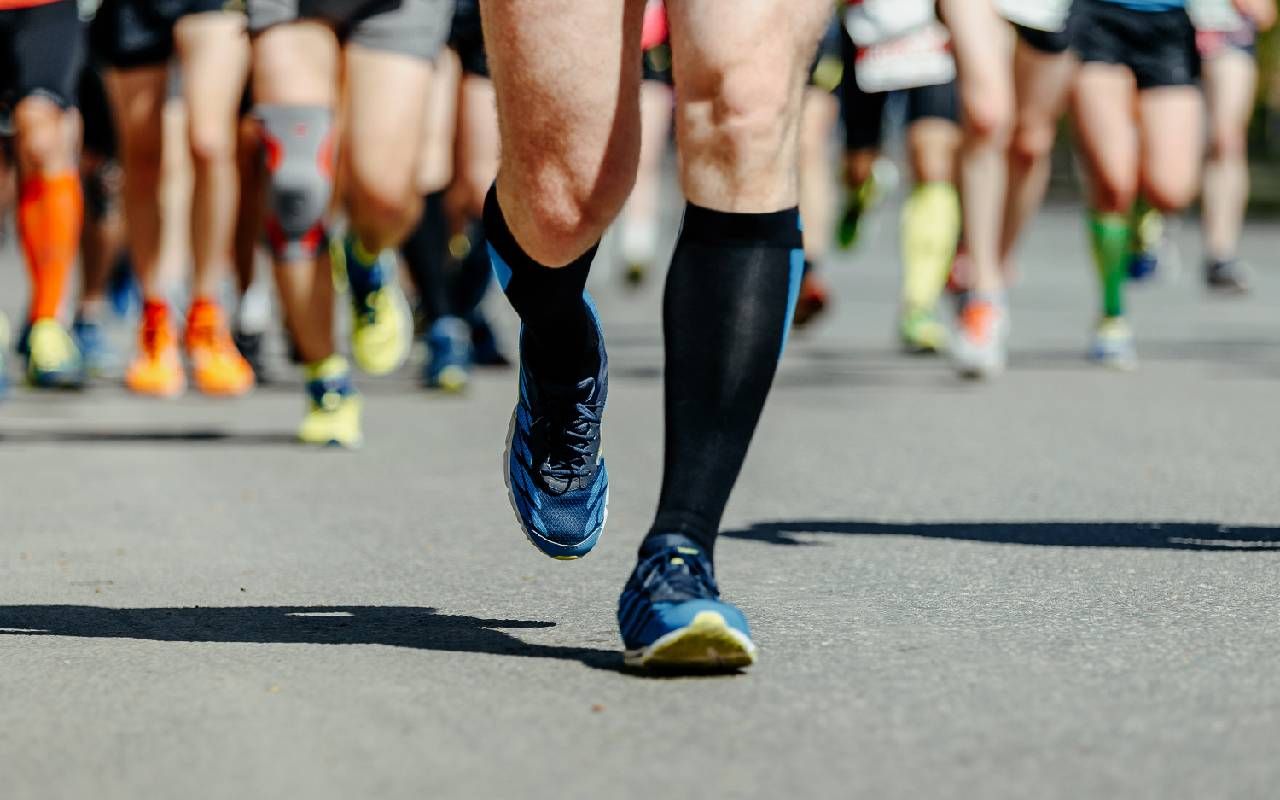Put the Squeeze on Compression Socks
Compression socks can help with circulation and may reduce the risk of blood clots
I scoffed when my sister-in-law reminded me to wear compression socks for my upcoming international flight. She explained the importance of good circulation — especially on a long flight —in preventing blood clots, but I resisted. I equated compression stockings with my grandma and ankles the size of tree trunks.

I discovered that compression stockings are all the rage, trending on TikTok and offering a wide range of fashionable options.
When I started working in high tech 30 years ago, I would fly back and forth to Singapore. I knew several colleagues who developed blood clots due to the long flights and sedentary practices, but I still resisted. I'll just get up and walk around, I thought. It's true that when I was 30 years younger, I could avoid blood clots even on long flights, but as we age, our circulation isn't what it used to be.
So, I reluctantly gave in and bought a pair for my recent trip. Once I tried them, I was converted; I couldn't believe how light my legs felt after having them on for just a few hours. Soon, I discovered that compression stockings are all the rage, trending on TikTok and offering a wide range of fashionable options.
While compression socks are not for everyone, when used correctly, they are a simple way to put a spring in your step with additional health benefits that should not be underestimated.
How Compression Stockings Work
We need to know a little anatomy to understand how compression socks work. Arteries carry oxygen-rich blood from the heart throughout the body; as the heart pumps, the blood is pushed out to the far extremities.
I reluctantly gave in and bought a pair for my recent trip. Once I tried them, I was converted.
Once the oxygen is depleted, the blood returns to the heart through veins. This return journey requires more effort. Working against gravity, our calf muscles are on point to help move the oxygen-depleted blood back to the heart by contracting and squeezing the veins to push blood upward.
Valves in the veins open to let blood move up and close to keep blood from moving backward and pooling in our legs. It's an ingenious mechanical system, but as we age, the valves and our calf muscles can weaken, allowing blood to leak backward and resulting in poor circulation. This is where compression stockings can give the veins a gentle squeeze, assisting in pushing blood back up to the heart and improving circulation.
Graduated compression stockings are, just as they sound, extremely tight-fitting socks. They work by squeezing tighter at the foot and ankle and gradually loosening higher up the leg. Wearing compression stockings and staying active can help improve blood circulation, which in turn can improve various medical conditions, including swollen feet and ankles, deep vein thrombosis (DVT), and varicose veins (swollen and enlarged veins).
Who Can Benefit From Compression Stockings?
While some exceptions exist, most people suffering from poor circulation or chronic venous insufficiency can benefit from compression stockings. Tens of millions of people in the U.S. suffer from poor circulation; genetics, age and obesity are all contributors. But there are many other reasons we may need a boost to our circulation.
"Anyone who stands for their jobs can benefit from compression stockings, including nurses, cooks, teachers and cashiers."
If you have just had surgery, have difficulty moving your legs, are on your feet at work or are spending long hours on an airplane, you may benefit from compression stockings.
At Tri-City Medical Center in San Diego, Susan Toth, RN, sees many patients with venous insufficiency. "Heavy set legs resulting from obesity or pregnancy can cause venous problems and varicose veins; compression stockings straighten out the veins so they can return blood into circulation." She has seen patients have reduced swelling and pain and increased healing of ulcers when they consistently use compression stockings.
"Once the swelling is under control, the capillaries can do their job and allow blood to reach the skin, promoting healing of the wounds. As recommended by a physician, compression stockings can be beneficial after surgery or for anyone with trouble moving their legs."
Toth says, "Anyone who stands for their jobs can benefit from compression stockings, including nurses, cooks, teachers and cashiers. Sedentary people with a history of long hours standing have a high chance of getting varicose veins. The earlier we use compression stockings, the more we can prevent problems later in life."
Your doctor may also recommend compression stockings for long flights; when confined to a small space for many hours, the risk of Deep Vein Thrombosis (DVT) increases. DVT is caused by a blood clot, usually in the legs. According to the CDC, as many as 900,000 people could be affected by DVT each year in the U.S.
The stockings might initially feel uncomfortable, but they should not be painful.
Blood clots can become dangerous and potentially fatal if they break off and move into the heart or lungs. Flights also exacerbate DVT with low cabin pressure and low humidity, which can lead to blood stagnation and increase the likelihood of blood clots. Blood clots are preventable; wearing compression stockings could reduce risk.
Compression Stockings Are Not for Everyone
People who have arterial and venous diseases together should not use compression stockings. If you experience cramps in your legs when you are sleeping that are relieved when putting your legs down, or if you have cold or purple feet, you should NOT wear compression stockings.
Toth advises, "People who have issues with arterial circulation in their legs and feet should not use compression stockings unless their doctor recommends, as compression stockings could worsen their condition."
Getting Started With Compression Stockings
Compression stockings can be bought over the counter, or your doctor may prescribe them, in which case your insurance may cover some of the cost. The cost can range from $5-$100 a pair. The compression stockings must fit correctly to reap the benefits.
The first thing to look for when buying compression stockings is the length; they should come to just below the knee with no bunching and cover your calf entirely. Ensure they are smooth against your skin, and don't fold or roll the top down. In some situations, a doctor may prescribe a thigh-high stocking after surgery.
The other important specification to check is the amount of pressure the compression stockings will exert on your legs. The pressure that is exerted is measured in mmHg. Further, you can be professionally fitted by trained staff at a medical supply store if you have any questions; this is recommended for prescription-grade compression stockings.
Trained staff can also show you how to put the stockings on and off. It is best to put them on first thing in the morning before gravity has had a chance to cause swelling in the legs and take them off at night before bed. The stockings might initially feel uncomfortable, but they should not be painful.
Not Your Grandmother's Compression Stockings
One of the main complaints you may have heard about compression stockings, or you may have experienced yourself, is the challenge of putting them on and taking them off. They are tight by design, making them a challenge to do.
Luckily, there are several solutions to this problem; now, you can find compression stockings with a zipper up the side or velcro to make them easier to get on. Lately, compression stockings have made quite a comeback, and you will find them in all kinds of fun patterns and designs.
I found some perfect compression stockings I look forward to wearing on my upcoming trip; I think Grandma would approve!


